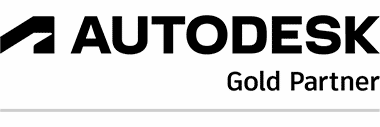In today’s complex world of infrastructure projects, effective teamwork and seamless information sharing are essential components for success. Autodesk offers a powerful suite of tools that include InfraWorks, Revit, and Civil 3D, each tailored for specific aspects of the design and construction process. However, to harness their full potential, it is crucial to ensure interoperability between these tools. This article explores how Autodesk InfraWorks, Revit, Civil 3D, and Autodesk Docs can work together to streamline collaboration, enhance efficiency, and improve accuracy in infrastructure projects.

The Workflow:
Project Setup:
The journey towards efficient infrastructure project collaboration begins with proper project setup. This involves establishing your projects within Autodesk InfraWorks, Revit, and Civil 3D, ensuring that each tool is ready for its specific role in the workflow.
Data Exchange:
Autodesk InfraWorks serves as the starting point for creating conceptual designs and preliminary models. These models can be seamlessly imported into Revit and Civil 3D for more detailed design and analysis.
InfraWorks to Revit:
To transition from the conceptual phase to detailed design, you can either export the InfraWorks model as an .RVT file or use the “Export to Revit” feature, which converts the InfraWorks model into a Revit model. This process maintains the continuity of your project.
InfraWorks to Civil 3D:
Similarly, to carry your design further into the detailed analysis stage, export the InfraWorks model as a .DWG file that can be imported into Civil 3D. This enables you to leverage Civil 3D’s powerful tools for further refinement.
Collaboration with Autodesk Docs:
At the heart of this interoperability workflow is Autodesk Docs, a cloud-based platform designed for document management and collaboration. Autodesk Docs acts as the central hub for storing, sharing, and managing design files from InfraWorks, Revit, and Civil 3D.
Uploading Files:
Project teams upload their design files, including those from InfraWorks, Revit, and Civil 3D, to Autodesk Docs. This centralized storage ensures that everyone has access to the most up-to-date project information.
Version Control:
Autodesk Docs provides robust version control features, mitigating the risk of errors due to outdated information. Team members always work with the latest design files, promoting accuracy and consistency.
Collaboration:
With Autodesk Docs, collaboration becomes effortless. Team members from various disciplines and stakeholders can review designs, make comments, and suggest changes, all within the platform. This real-time collaboration enhances communication and decision-making.
Syncing and Updating:
As the project progresses, updates and changes are made to the design models in InfraWorks, Revit, and Civil 3D. These updated files can be effortlessly synced with Autodesk Docs, ensuring that all project contributors are on the same page.
Data Extraction and Analysis:
Revit and Civil 3D models can be further analyzed and detailed within their respective environments. Additionally, these models can be utilized for construction documentation, visualization, and more, further enhancing project efficiency.
Benefits:
- Efficient Collaboration: The interoperability between InfraWorks, Revit, Civil 3D, and Autodesk Docs streamlines collaboration among different disciplines and stakeholders, fostering a cohesive project environment.
- Version Control and Data Integrity: Autodesk Docs’ version control features ensure data integrity, reducing the risk of errors due to outdated information and enhancing project accuracy.
- Cloud-Based Access: The cloud-based nature of Autodesk Docs enables team members to access project files from anywhere with an internet connection, facilitating remote collaboration and flexibility.
- Reduced Redundancy and Duplication: The interoperability workflow minimizes redundancy by allowing seamless sharing and updating of design models, eliminating the need to recreate designs in different software tools.
- Enhanced Visualization and Analysis: InfraWorks provides a high-level visual representation of the project, while Revit and Civil 3D offer in-depth design and analysis capabilities, creating a comprehensive workflow.
- Streamlined Documentation and Reporting: Revit and Civil 3D models can be leveraged to generate construction documentation, reports, and visualizations, enhancing project communication and documentation.
- Time and Cost Savings: By streamlining data exchange and collaboration, the interoperability workflow can lead to significant time and cost savings throughout the project lifecycle, promoting efficiency and profitability.
In conclusion, the implementation of Autodesk Docs in conjunction with Autodesk InfraWorks, Revit, and Civil 3D presents a robust and comprehensive approach to enhancing collaboration, efficiency, and accuracy in infrastructure design and construction. This interoperability workflow not only streamlines data exchange but also empowers project teams with the tools they need to work cohesively, ultimately leading to successful and cost-effective infrastructure projects.



